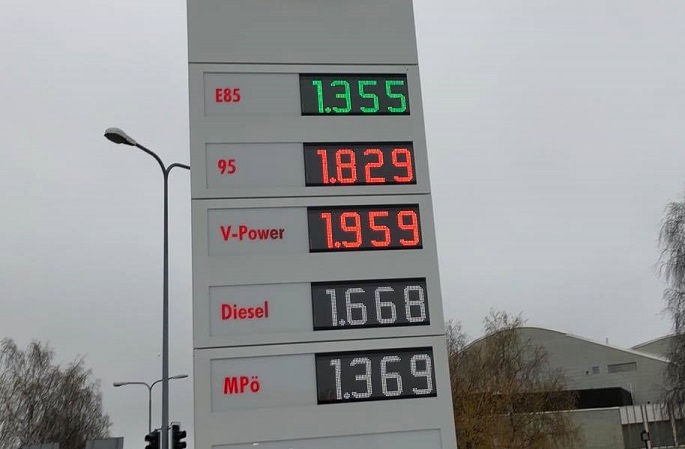Euro area's inflation hits highest level in 25 years
Published : 08 Jan 2022, 01:06
Inflation in the eurozone hit a new record of 5 percent in December, the European Union's statistical arm Eurostat said on Friday, reported Xinhua.
Preliminary data from Eurostat shows that this was the highest level in the eurozone since recordkeeping began in 1997. It breaks the record of 4.9 percent set in November.
The increase was mainly driven by the spike in energy costs, which shot up again in December, jumping at an annual rate of 26 percent. However, that was somewhat lower than the previous month.
A sharp rise in the cost of food, alcohol and tobacco contributed to the overall increase in inflation, picking up pace to 3.2 percent. This was higher than the 2.2 percent rate posted in November. Non-energy industrial goods saw prices increasing by 2.9 percent (compared with 2.4 percent in November) while the cost of services decreased to 2.4 percent from 2.7 percent in November.
Among the countries which saw steep increases in inflation were Estonia, with the highest rate at 12 percent, followed by Lithuania with 10.7 percent and Latvia with 7.7 percent. Spain posted an inflation rate of 6.7 percent, while Germany had a rate of 5.7 percent.
The smallest price increases were in Malta (2.6 percent) and Finland (3.2 percent).
These figures are well above the European Central Bank's (ECB) target of 2 percent inflation in the euro area. However, ECB said this inflation is transitory and should decrease in 2023, after peaking in 2022.
According to ING expert Bert Colijn, eurozone inflation is actually at its highest since 1985.
Colijn wrote in his blog that inflation is expected to decrease as energy inflation moderates. Core inflation is set to remain above 2 percent in the first half of 2022, as high producer costs are priced through to the consumer, he said.
Real wages remain under pressure, he said, as second-round effects from high inflation on wage growth remain mostly absent.
This dampens GDP growth somewhat, but also means that the European Central Bank still has time to see how quickly the current supply-side inflation declines over the course of the year before deciding on further action.


